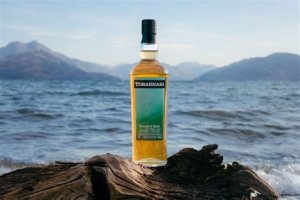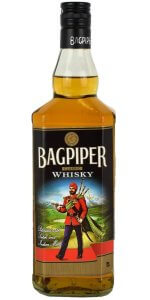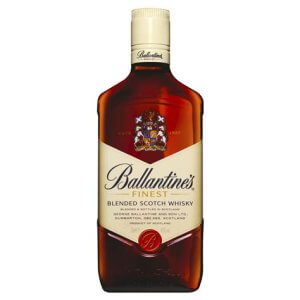The Weekly Mash May 9 2025
Welcome drammers. Thanks for the kind words for last week’s screed. Let’s see if I can keep this going.
This week we venture to Skye, India (again), a floor maltings, and find out what’s been on the speakers when I begin to drink (rather than taste, which is always done in silence).

The sound of the Sound
The Sound of Sleat refers to the stretch of water separating the south cast of Skye from the mainland. It is also the newest release from Torabhaig, bottled at 46% and priced at around £59, it’s the fourth of its heritage series which will lead up to the release of its 10yo.
There’s a whack of woody peat smoke from the start alongside salt, parsley stalks, wet wool before some light fruits emerge, accompanied by the unmistakable smell of a new(ish) welly boot.
Water calms is down, bringing out more of a musky peat reek – the fire settled, the aroma filling the air. Ca’ canny with the dilution – only a little is required. Now there’s some greener notes, broom and a citric sweetness. There’ salty liquorice, black pepper, and fat on the finish.
The texture is oily and clinging and initially is pretty dry with kiln-like smoke, along with gentian bog. That splash of water helps to boost the feel, as well as upping a seaweedy element, a tiny caramel touch topped by a sprinkle of lemon zest and sel gris. The peatiness is more bog-like but the pepperiness and rooty, bitter kiss-off remains. Its Gaelic subtitle Blas na Mòna (‘the taste of peat,’ or maybe ‘relish the peat’) is justified.

Hearing ‘Sound of Sleat’ triggers memories of the place, the water and the land. Sleat (pronounced ‘slate’) is Sléit in Gaelic, meaning ‘plain, or level field’ and comes, like so many of Skye’s placenames, from the Norse, in this case Sléttr meaning ‘smooth’, an accurate description of its low-lying, fertile fields.
The true sound of the place is the language spoken there. Sleat is a stronghold of Gaelic. The sound of the Sound is that overheard in the Co-op, or the pierhead at Armadale.
It comes from the mouths of the students at the Gaelic university, Sabhal Mor Ostaig careening into the Eilean Iarmain hotel with their instruments, starting up a boisterous session.

It is there in the naming of places, whose meanings have been eroded, lost or warped into a different tongue. When a language disappears, the landscape loses its meaning and navigation, in the sense of a reading of the place, becomes impossible. Placenames are memorials – the old names of fields and burns, hills and mountains, shorelines, skerries and bays are freighted with meaning.
Reading a landscape is significant in whisky terms too – location is key in terms of land on which to build, access to transport, effluent disposal, but most vitally availability of plentiful and suitable water. That in turn is dictated by geology, while the minerals in the water will then have an influence on fermentation.
Torabhaig’s positioning is the result of all of these, plus the availability of a suitable building with planning originally granted to Sir Iain Noble, founder of Sabhal Mor Ostaig. The sound of the Sound was another factor for Torabhaig’s owner, Frederik Paulsen, whose charity work is involved in preserving vanishing indigenous cultures.

That sound is also there in Brìghde Chaimbeul’s music. Born in Sleat and with Gaelic as her first language, she is exploring the tonal possibilities of the small pipes.
At a time when much of Scottish trad music seems to consist of just playing as fast as you can, she is exploring alternative tunings and drones. Unafraid of the discordant, she crafts spiralling, trance-like pieces which she says are ‘about the sense of language more than place’
It’s hard, though, to listen to her without feeling that the coiling notes are pulling you into a different, strange world, absorbed into the moine dubh.
This is what I’ll be listening to when sipping this dram. The sound of the sound of the Sound.


Tariffic News?
The news of the free trade agreement between the UK and India is undoubtedly a positive move for the whiskies made in the former with tariffs being reduced from 150% to 75%. While it opens new opportunities for English, Welsh, and Northern Irish firms, but the main beneficiary is Scotch.
‘India is a whisky-drinking country,’ was the mantra repeated any time the topic came up for discussion. You could almost see the rupee signs in the eyes when the opportunities were discussed. Cracking India was Scotch’s saviour – were it not for the tariffs.
While they were the main barrier to Scotch, the picture was also complicated by the vigorous lobbying by Indian producers to permit their definition of whisky, opening up potentially lucrative export markets.
Indian ‘whisky’ (IMFL) has been made from locally-produced (and often unaged) molasses spirit, imported bulk Scotch and a dose of caramel. The trouble is that whisky is defined globally as an aged, non-neutral, cereal based spirit. Molasses is fine for rum, but not whisky. Whether this has been quietly sneaked through in this agreement isn’t clear at the moment.

Mark Kent, the SWA’s chief executive called the deal ‘transformational for the industry’, and making the bold claim that it had the potential to increase Scotch exports to India by £1bn over the next 5 years.
The tariffs have clearly hampered Scotch’s potential in the sub-continent. In 2007, they fell from more than 600% to 150% (the maximum the WTO decreed it could place on wines and spirits). That reduction caused a significant boost for Scotch sales but it remained expensive and out of reach of the bulk of the population.
Now, the Scotch producers are banking on a greater bounce back.
As we saw last week, Indian-made single malt (all of which conform to the global definition of whisky) is growing fast at home – indicative of a rapidly-maturing and increasingly educated market.
While single malt Scotches could now benefit from this uptick in interest, it is likely that the majors will concentrate their efforts on blends. Chivas Brothers’ chairman/CEO Jean-Etienne Gourgues claimed that the Scotch market in India ‘could double in five years’ with the firm’s efforts being concentrated on Ballantine’s and Chivas Regal.

Questions remain however.
Each of India’s states can levy its own excise duties, while some ban alcohol, creating barriers to national distribution, wildly differing prices and in  turn an incentive for smuggling.
turn an incentive for smuggling.
Will the allure of the imported be sufficient to win over Indian consumers? There has been a slightly naive belief within Scotch producers that as soon as tariffs came down that Indian drinkers would immediately switch loyalties and welcome their saviour from overseas.
Scotch will be less expensive, but 75% tariffs will means it will still be at a considerably higher price than locally-produced single malt – or the old-established IMFL brands.
There’s also politics to consider. How much of the rise of Indian single malt is a side-effect of Narenda Modi’s ‘India First’ philosophy? How does UK-made whisky sit within the concept of Hindu nationalism? While Scotch will have a boost as a result of this hugely welcome development, things might not be as simple as some think.
A Musing
When I was at Feddie (full report here), the conversation turned to pricing, as it always does in these straitened times. They have deliberately priced their whisky at around £50-£60. This is the price band where, retailers are telling me, their customers are mostly shopping these days. People still want whisky, but they don’t have the money.
Makes you think that this whisky lark isn’t that difficult.
All you need is to:
1) Make great juice
2) Put it into a bottle bottle it and
3) Sell it at a sensible price that folks can afford.
It’s not rocket science.

In my glass…
Continuing last week’s spring whisky theme, is the latest release from Benriach, Malting Season 4th Edition (47.9%). It’s a 10yo aged in 27 ex-Bourbon barrels and four oloroso butts and costs £110.
There are some sweet cereal notes here along with preserved lemon, chamomile while the flavour is like sooking on a barley sugar sweetie. Here’ some apricot jam (and a touch of stone), mango and tangerine peel, then a drying sumac-like spicy finish. It’s the classic Benriach three movements – malt, fruit, spice turned up an extra notch.
The key though is the texture, which is full and rounded. It’s yet more evidence of how floor malting adds thickness and weight to a dram.
(As ever, no scores. If it’s here, I like it)
In my ears…

Writing, drinking and listening to Brìghde Chaimbeul also sent me back to the much-missed Andrew Weatherall’s Moine Dubh psych folk series. There’s a mix here. The bog calls.